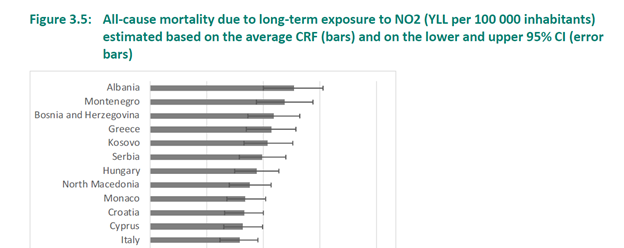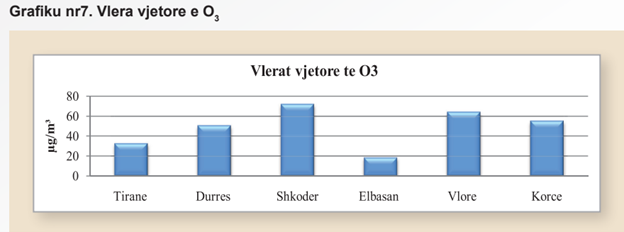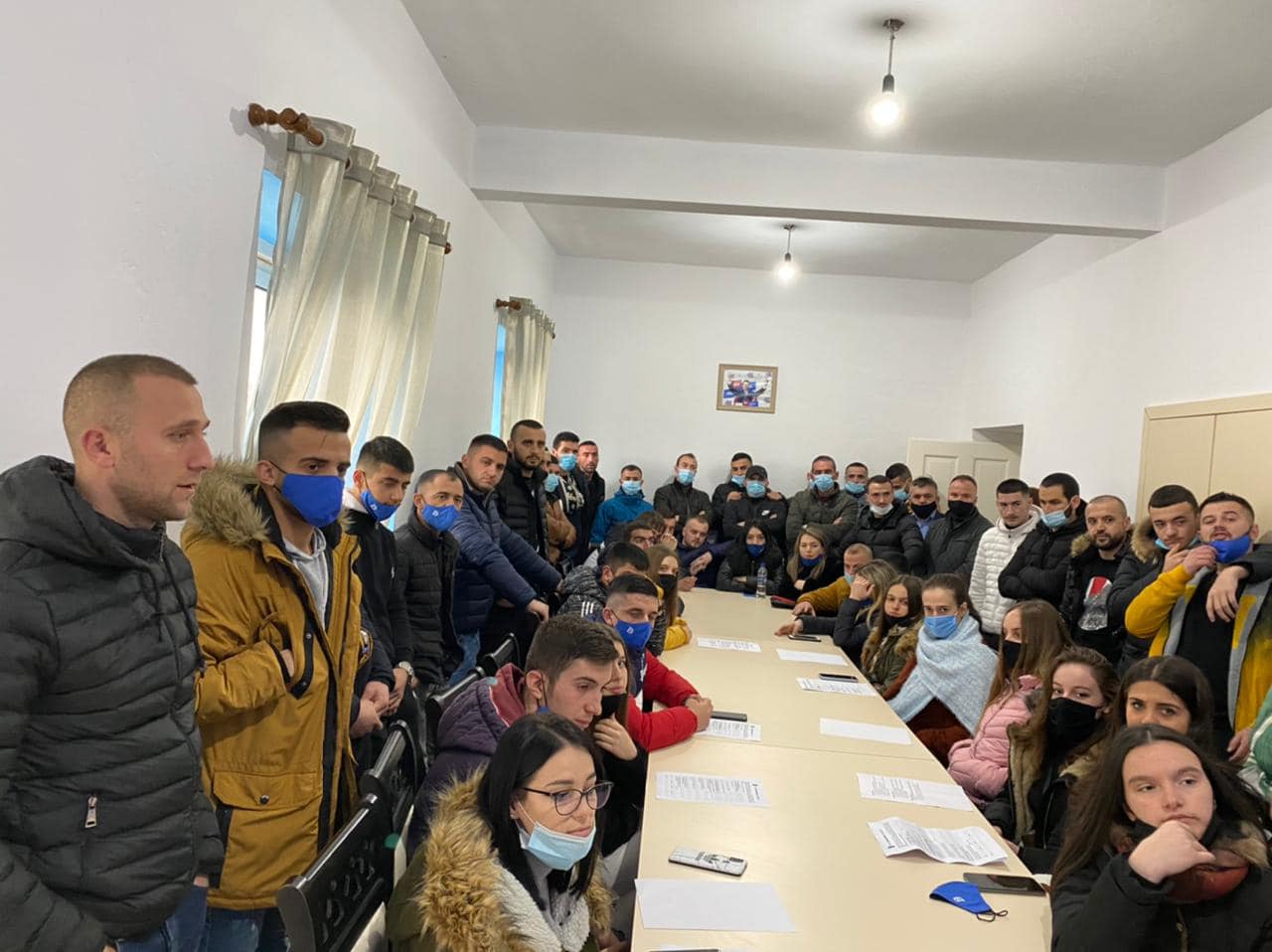Air pollution in Tirana exceeds the EU norm, which is also confirmed by local agencies. While Albania ranks first for the number of deaths as a result of exposure to ozone and nitrogen dioxide. From a comparison of the data, it results that the air of Tirana, where about a third of the population of Albania lives, is more polluted than 10 years ago. Experts explain how dust particles endanger the environment, but also the human body. They penetrate into the respiratory tract and the blood, influencing until causing disorders of the nervous system.
A year ago, the Mayor of Tirana, Erion Veliaj declared that the air quality in Tirana was at optimal levels.
“I’m here with you now and I’m launching Il Meteo and Copernicus provides the digital air quality system for every city. Tirana is 8 out of 10. When I remember 8 years ago that the same application gave us a complete red, 2, 3, 4, so not even a passing grade, clearly something has happened” – stated Veliaj on February 20, 2023 .
To find out at what level the air quality is in Tirana, we addressed a request for information to the National Environment Agency, which we asked for data on the latest monitoring in the capital.
Referring to the data for the year 2023, KTA admits that Tirana exceeds the European Union norms for PM10 and nitrogen dioxide.
“From the monitoring that the National Environment Agency has already carried out over the years, it results that in the city of Tirana we exceed the European Union norm for PM10 (dust particles with dimensions of 10 microns) and NO2 (nitrogen dioxide), both of these indicators that come from the burning of fossil materials (coal, oil, gasoline, etc. at high temperatures), mainly from traffic”, emphasizes KTA.

Pollution in Tirana for 2023, KTA data
Environmental expert Olsi Nika explains the data provided by Faktoje, noting their absence for long periods of time.
“Ultimately, with so much data at your disposal, it can be said that the situation of PM 10 and PM 2.5 is problematic.
PM means solid particles suspended in the air (Particulate Matter) and the number 2.5 or 10 is their diameter measured in micrometers. (So 1/1000 of a millimeter).
These particles are very dangerous for the environment, but also for human health. In humans, PM 2.5 particles can penetrate the respiratory tract and the blood circulation system, affecting their normal and physiological functioning”, argues Nika.
According to him, these particles have different sources, starting from the dust generated by inert materials such as constructions, engineering works, factories, to the slag generated by car exhausts, chimneys of factories, factories, TECs, etc.
The table below shows the optimal parameters of polluting elements, according to expert Olsi Nika.

Reports on air pollution in Tirana
A report by the European Environment Agency , published in November 2023, proves that Albania has the highest death rate in the region, per 100,000 inhabitants, as a result of exposure to ozone, which is created by the combination of harmful gases emitted by vehicles from the complete non-burning of the fuel or its poor quality, especially on days with very high temperatures.

Screenshot from the report
The same report ranks our country at the top of the list in terms of death due to Nitrogen Dioxide per 100,000 inhabitants, a substance that is produced by burning fossil fuels such as gas, coal and oil.

According to the same data, in the period 2017-2021 in Albania, 5,410 people lost their lives, as a result of long-term exposure to PM2.5 and nitrogen dioxide and short-term exposure to ozone.
Consequences of air pollution on health
Pulmonologists argue that polluted air, soil and water cause all kinds of disorders, starting from skin diseases, nervous disorders, diseases of the respiratory system, cancer, cardiovascular diseases, hepatic, diabetic, endocrinological and urinary tract diseases.
“The trend is increasing. I see more and more young ages affected by these changes. We are all witnesses, at least visually, of the increase in the amount of pollen in the city. Scientifically, it has been proven that there is a parallel in terms of the addition of carbon dioxide and the addition of pollen to the air. Allergic phenomena have increased in mass. Children with problems from an infantile age can be scientifically justified to some extent through heredity, but it is not enough. It is in front of us the fact that the pollution is not only present, but also increased over the years”, says doctor Ardian Jorgji for Deutsche Welle.
Doctor Ilir Alimehmeti lists the health problems as a consequence of the high concentration of nitrogen dioxide, especially in the capital.
“Nitrogen dioxide increases mortality from cardiovascular and respiratory diseases and worsens asthma, respiratory infections and chronic lung diseases,” Alimehmeti said.
Air quality 10 years ago ‘better’ than today
A report of the National Environment Agency in 2014 shows that even in that period there was an excess of the EU norms for PM10. However, today’s figures show a higher level of pollution than a decade ago.
“It can be seen from the graph that we exceed the EU limit value of 40μg/m3 in three monitoring stations, the station of the National Environment Agency, the Ministry of Environment and Elbasan. All three stations are a source of traffic pollution, as the number of cars circulating on the roads near the stations is very high. At the KTA station, in addition to vehicle exhaust, road dust and construction also affect air pollution by PM10. The highest daily value was monitored in the month of April and is 142.55 μg/m3 from 50 μg/m3 which is the daily standard of the EU” – explained KTA 10 years ago.

Values for PM10 Tirana, 2014
High rates were also reported in 2014 for ozone, which also causes damage to the human body.
“High ozone levels can cause respiratory health problems by reducing lung function, worsening asthma and other lung diseases, and leading to premature death. Ozone is also a greenhouse gas, contributing to the warming of the atmosphere”, explained KMA in the 2014 report.

Based on the official figures and the concerns of experts, it turns out that the air quality in Tirana is a danger to the health of the citizens and that the capital is no cleaner than a decade ago, on the contrary.






